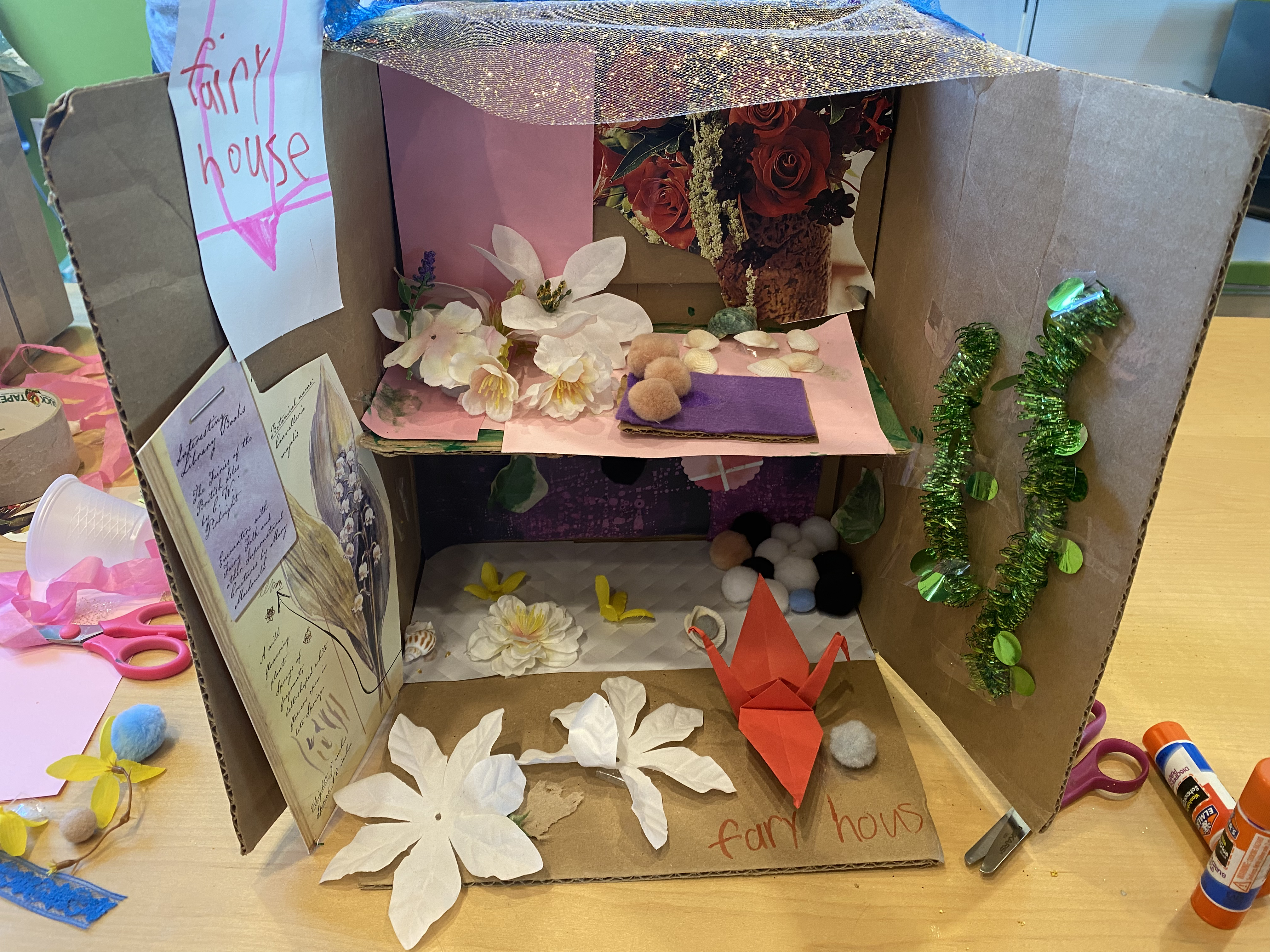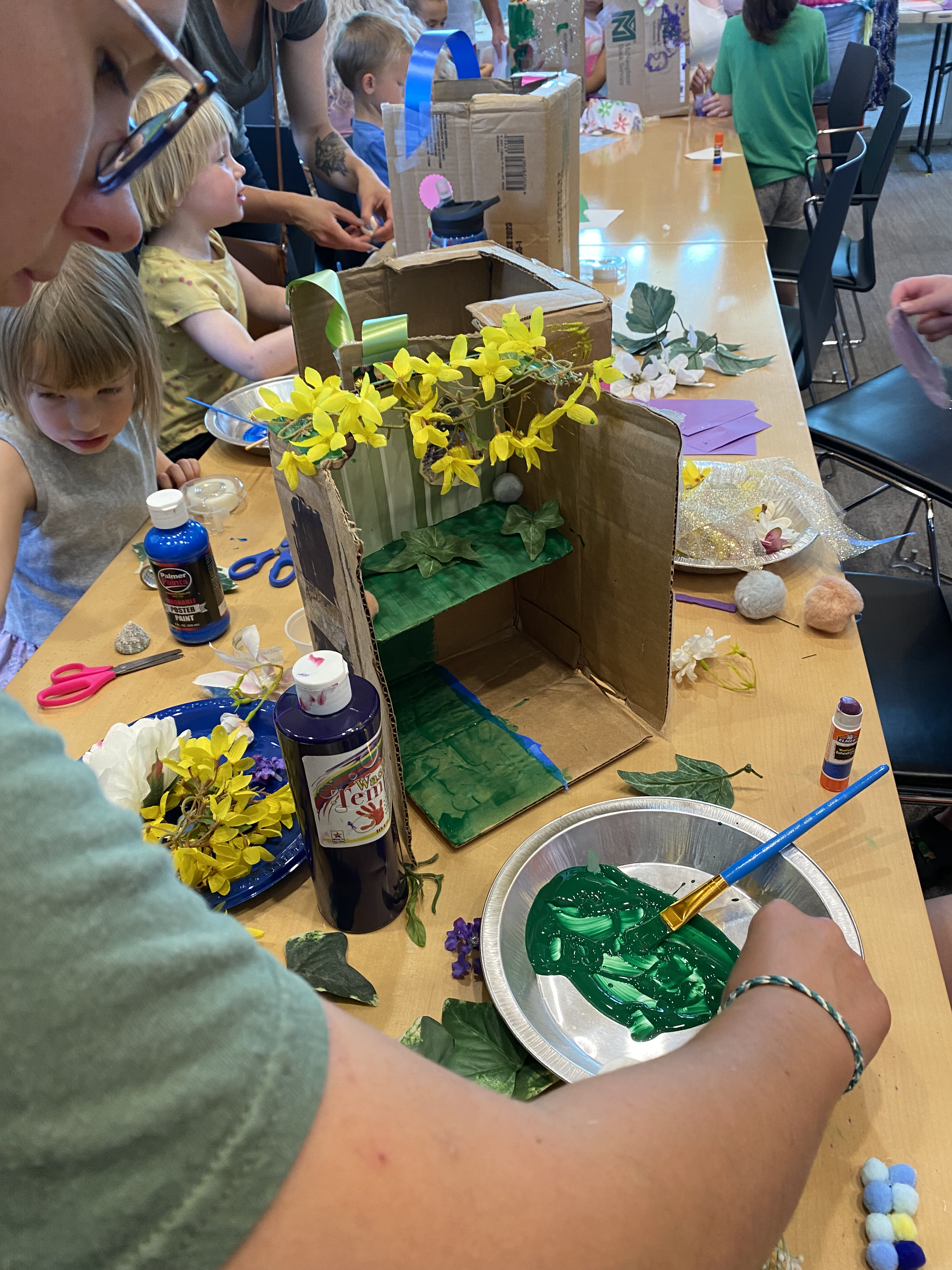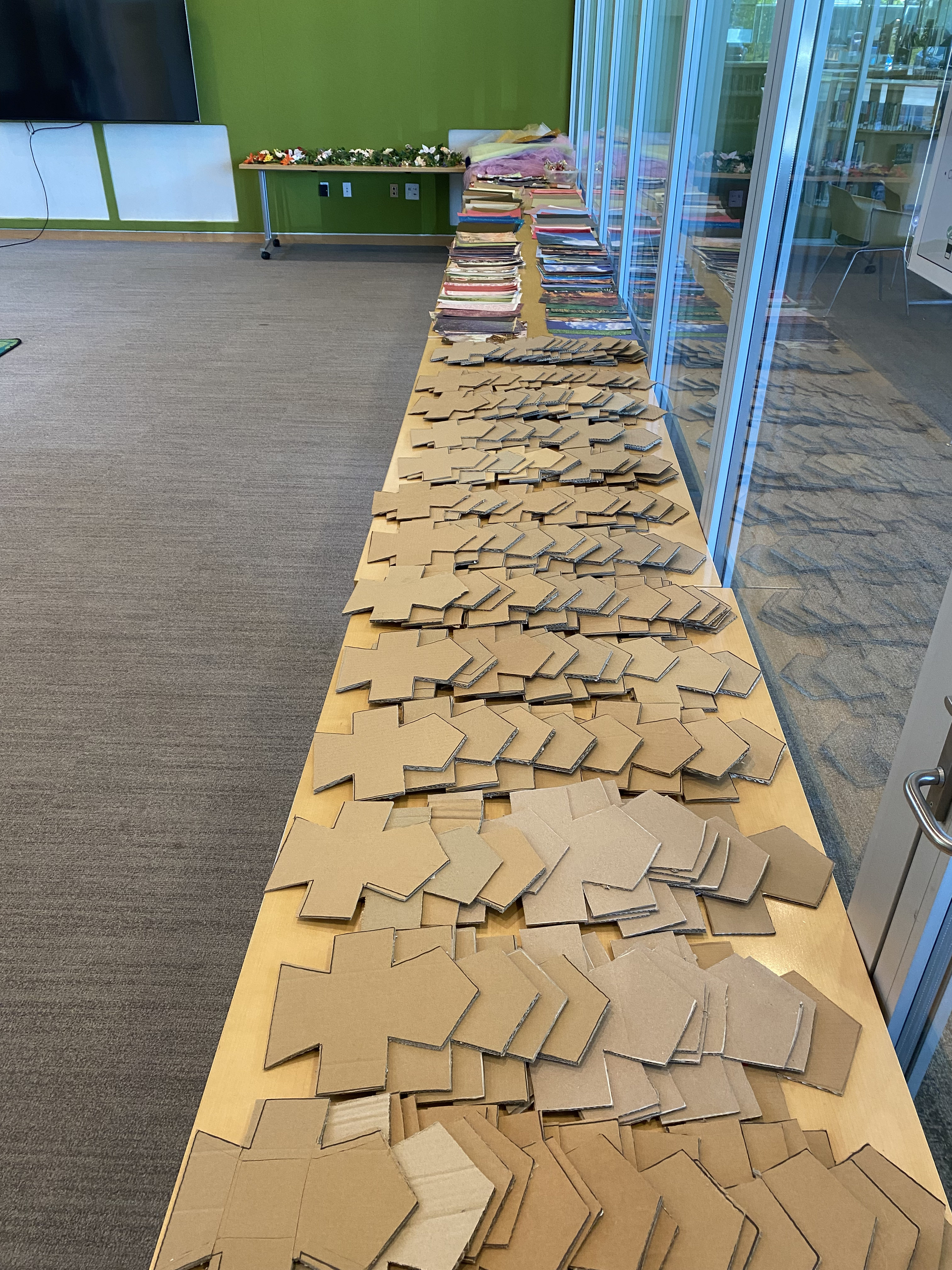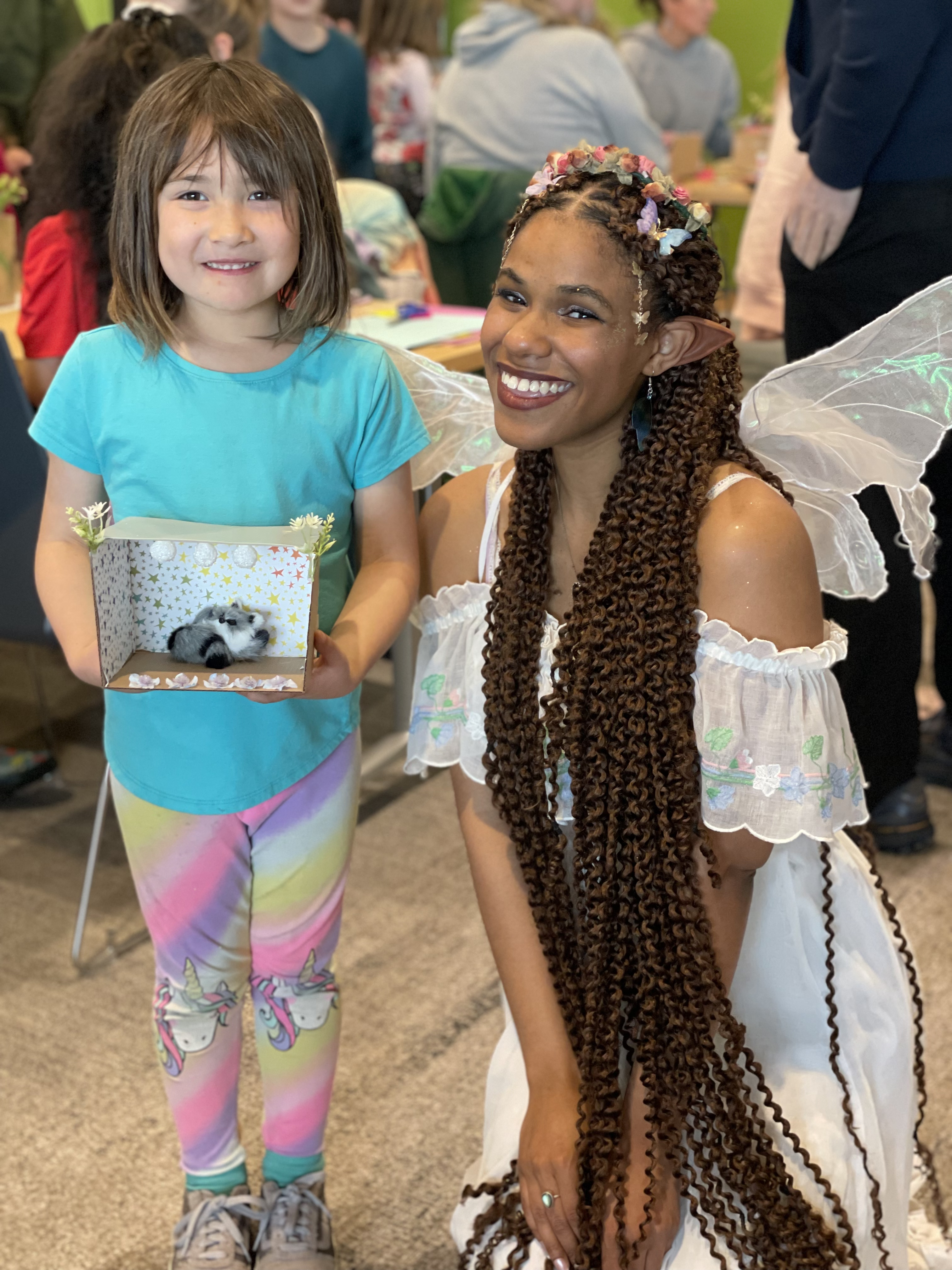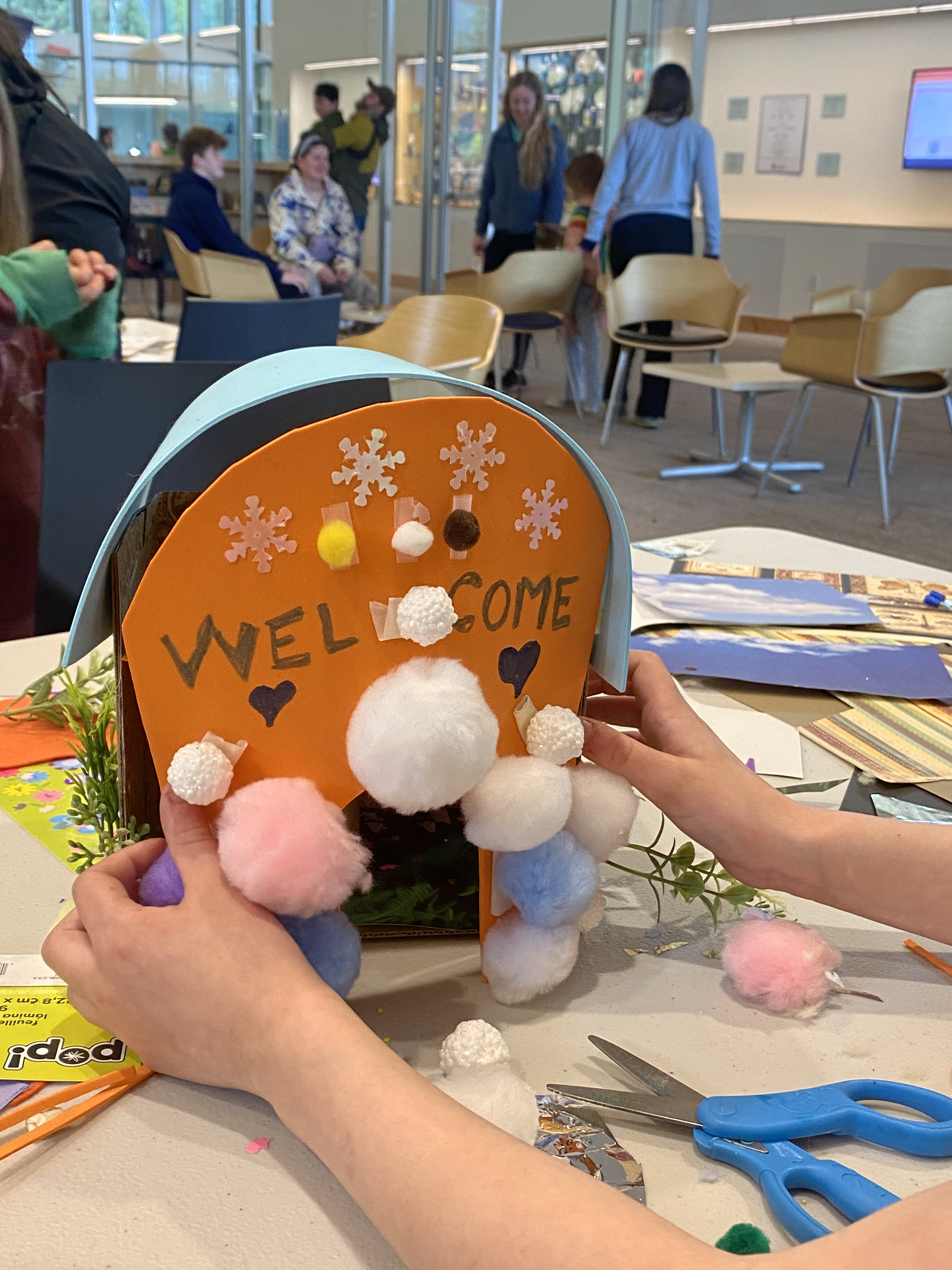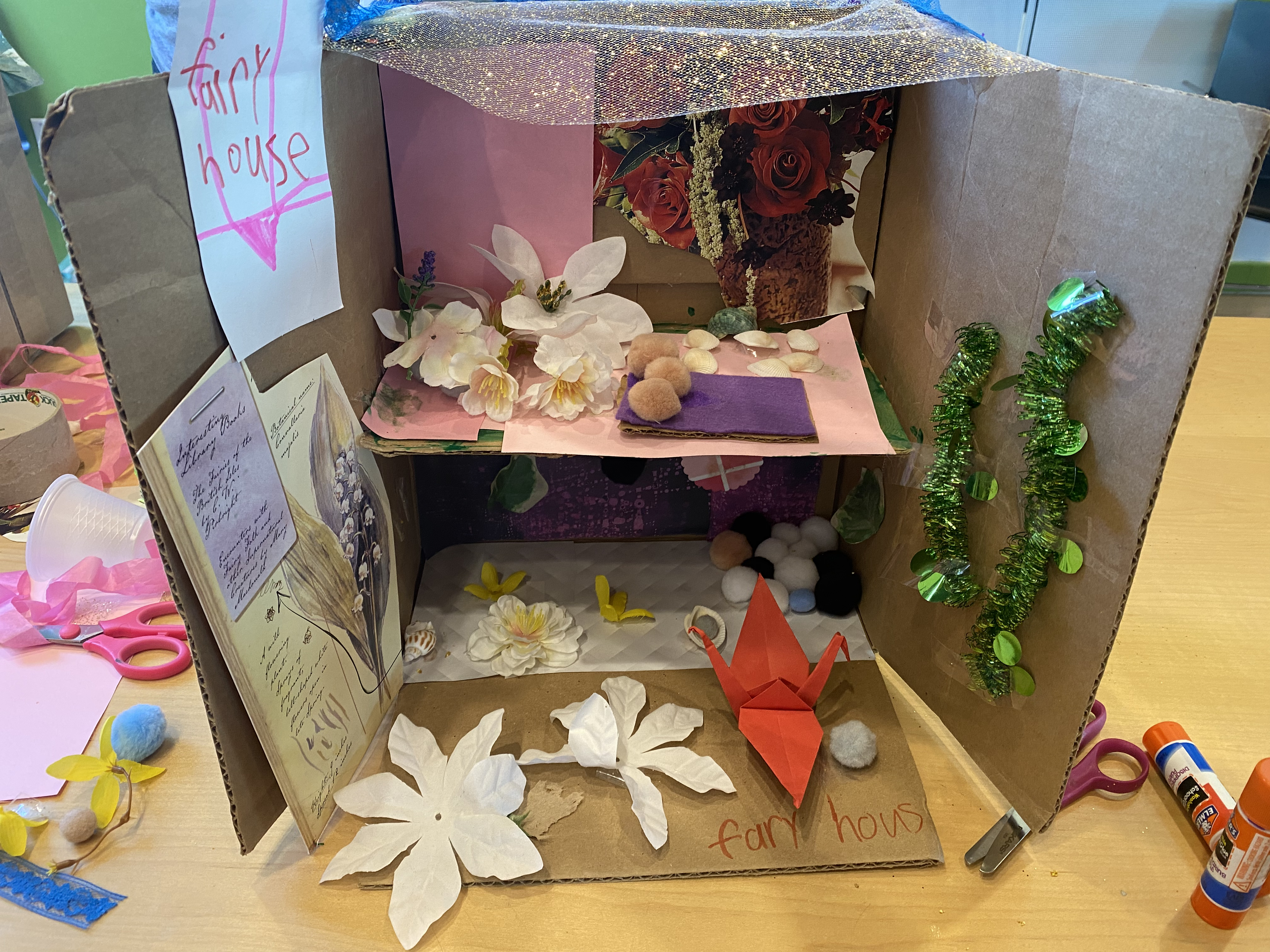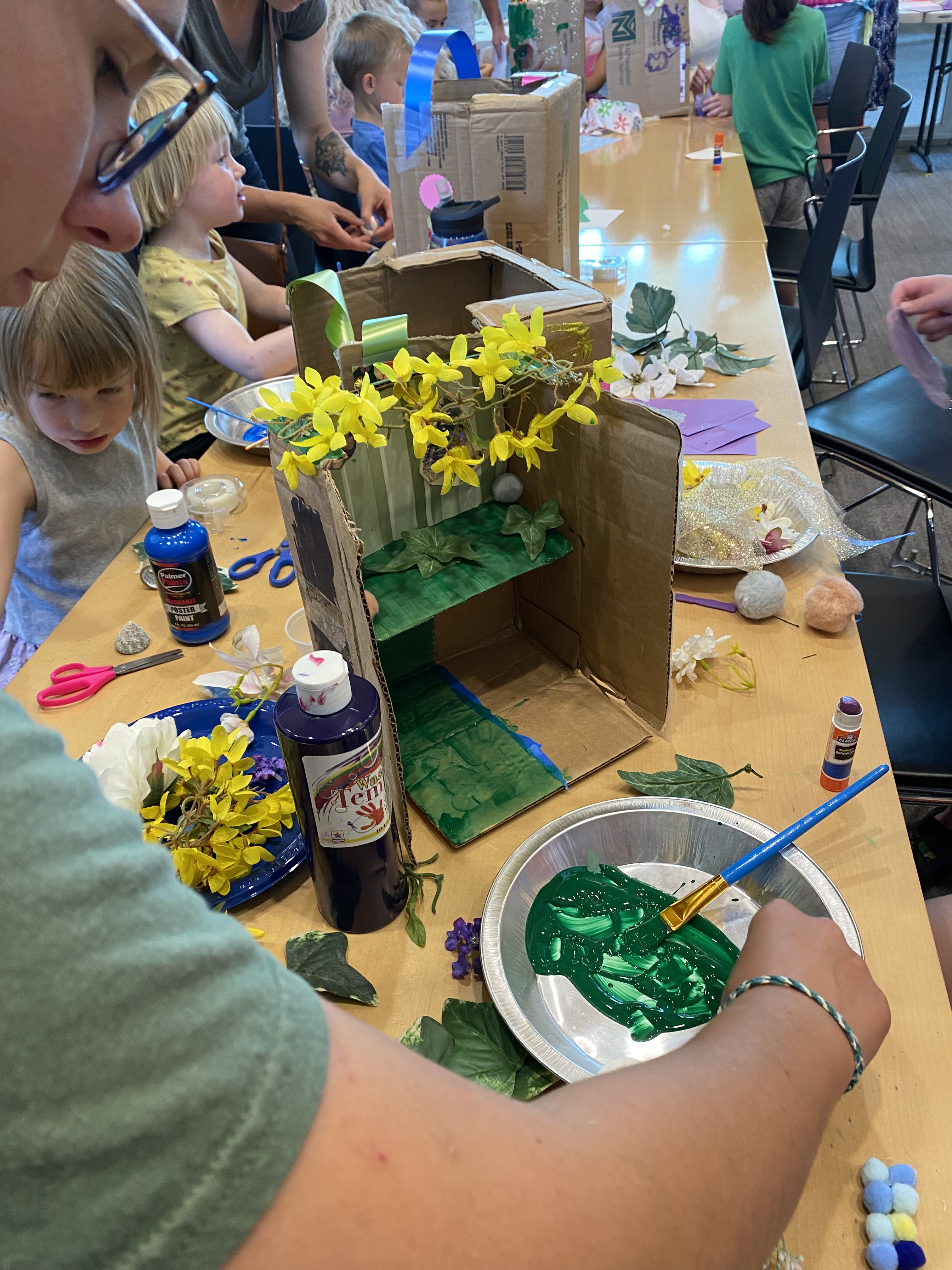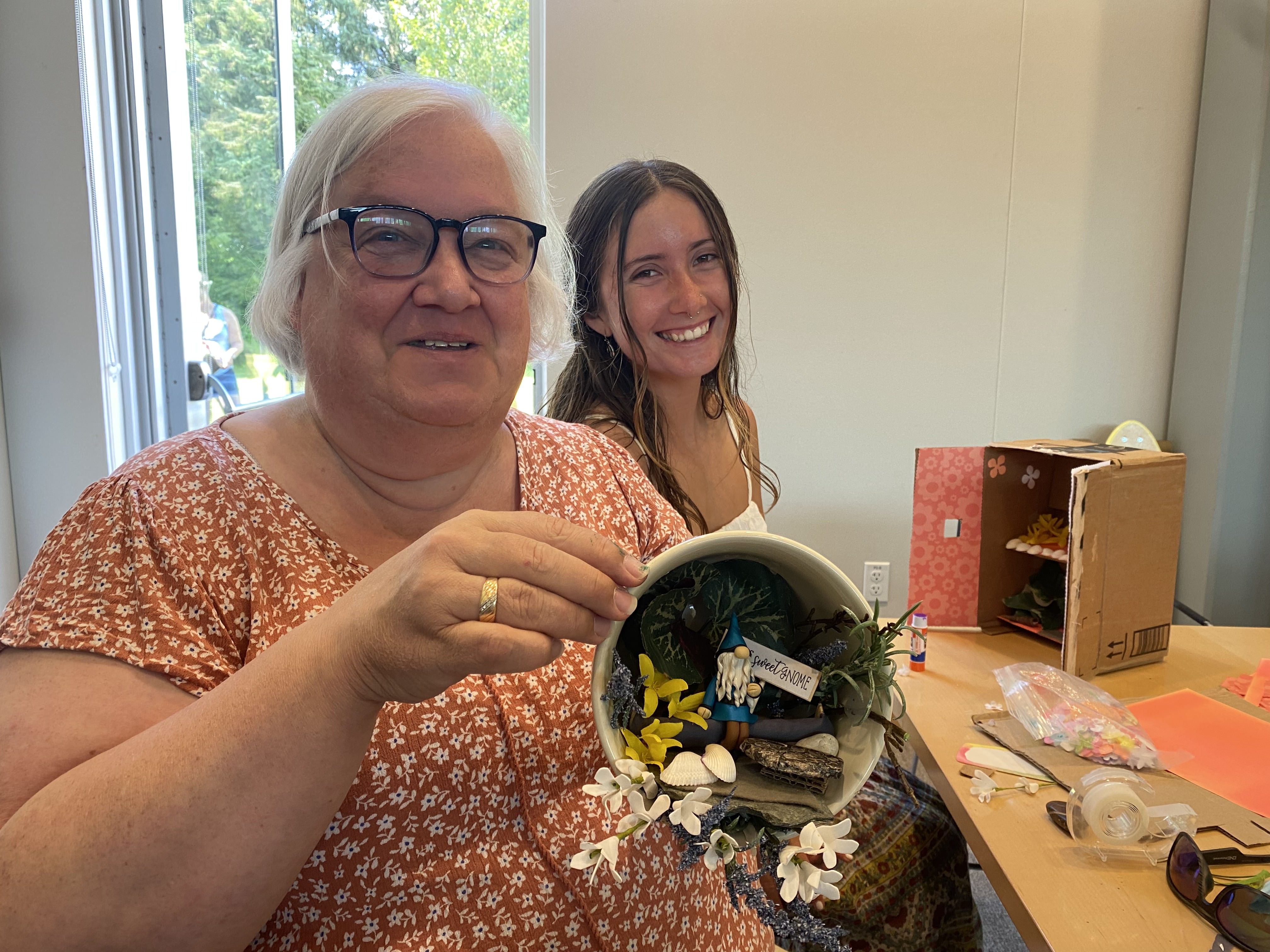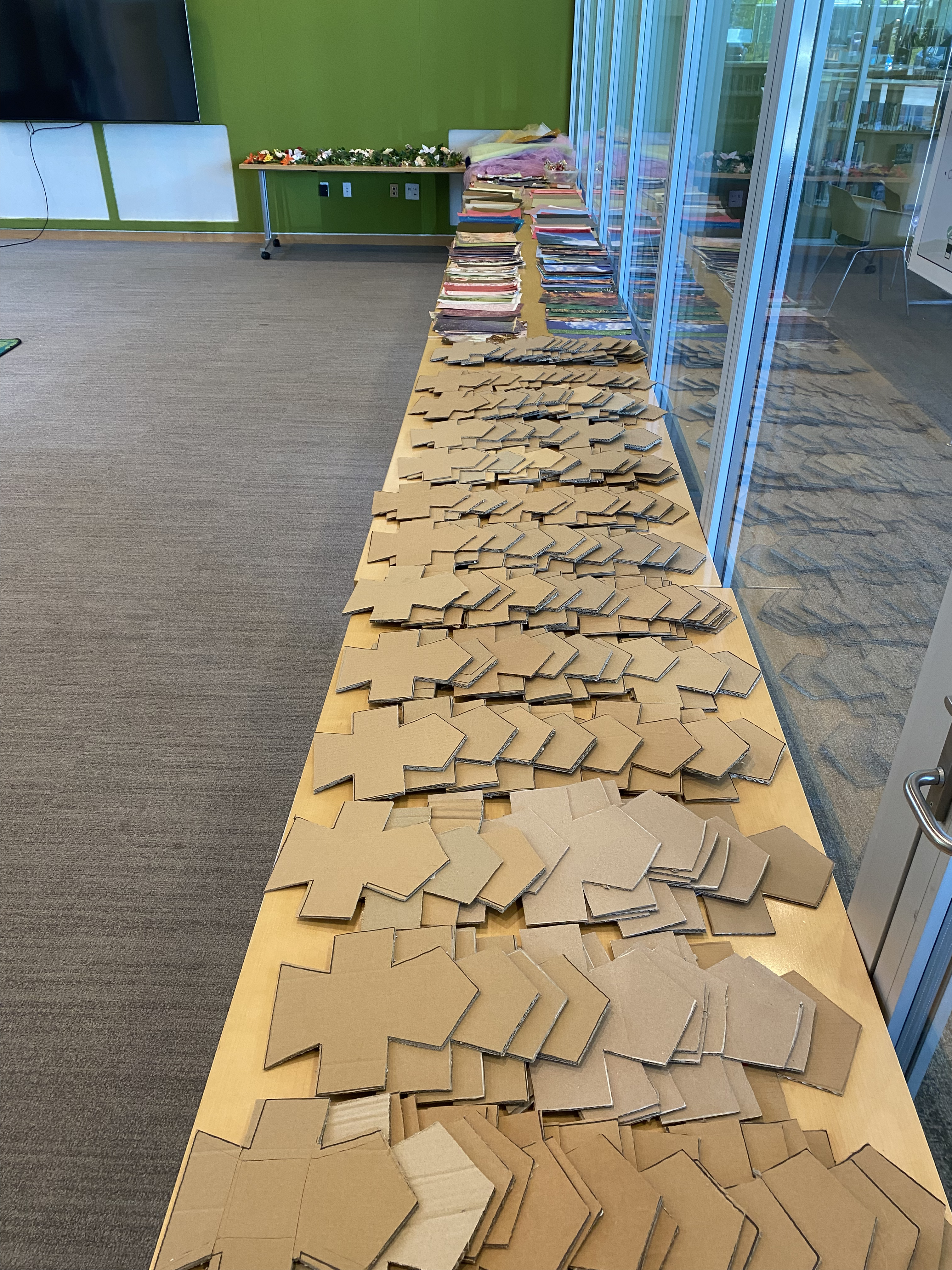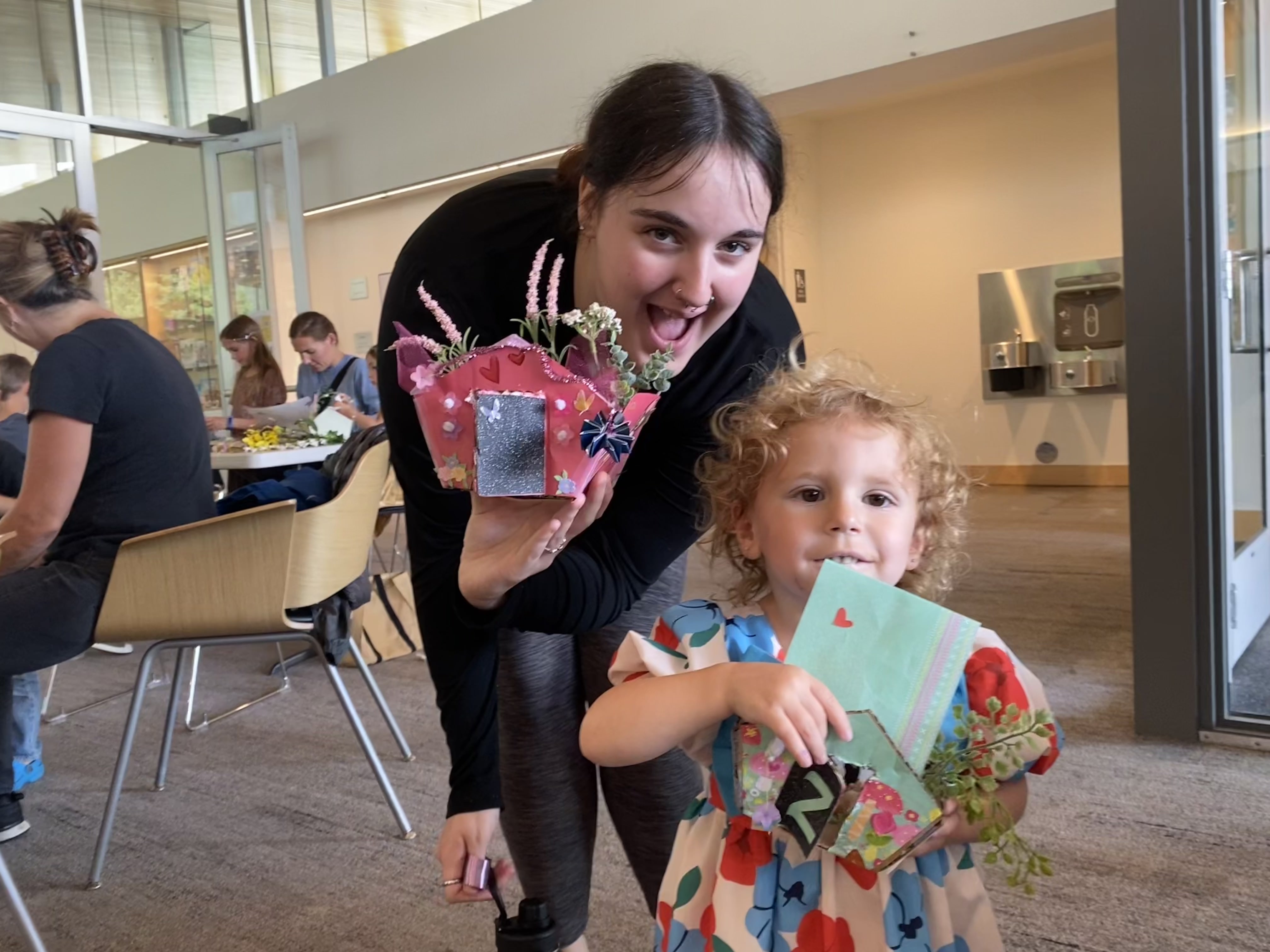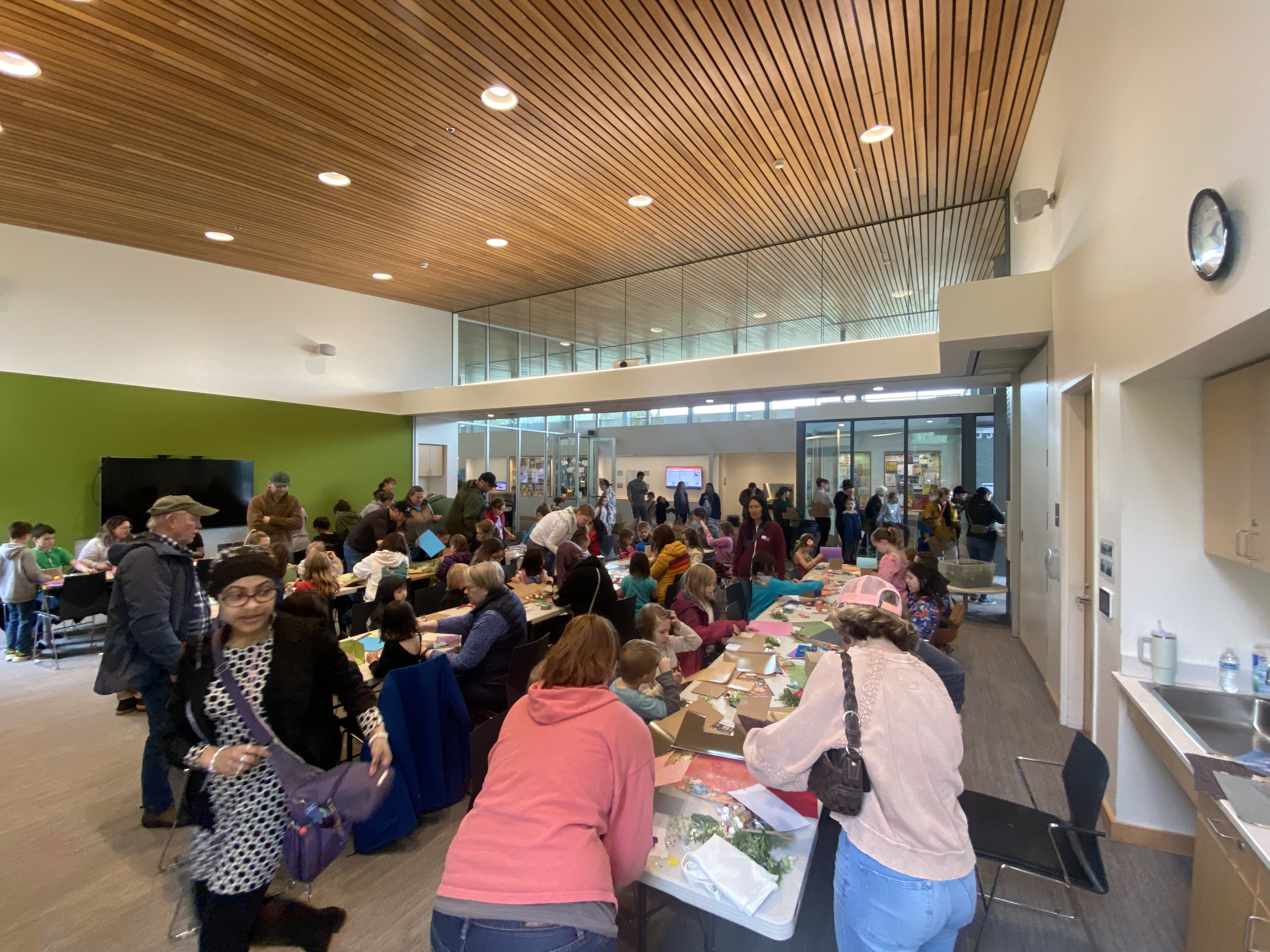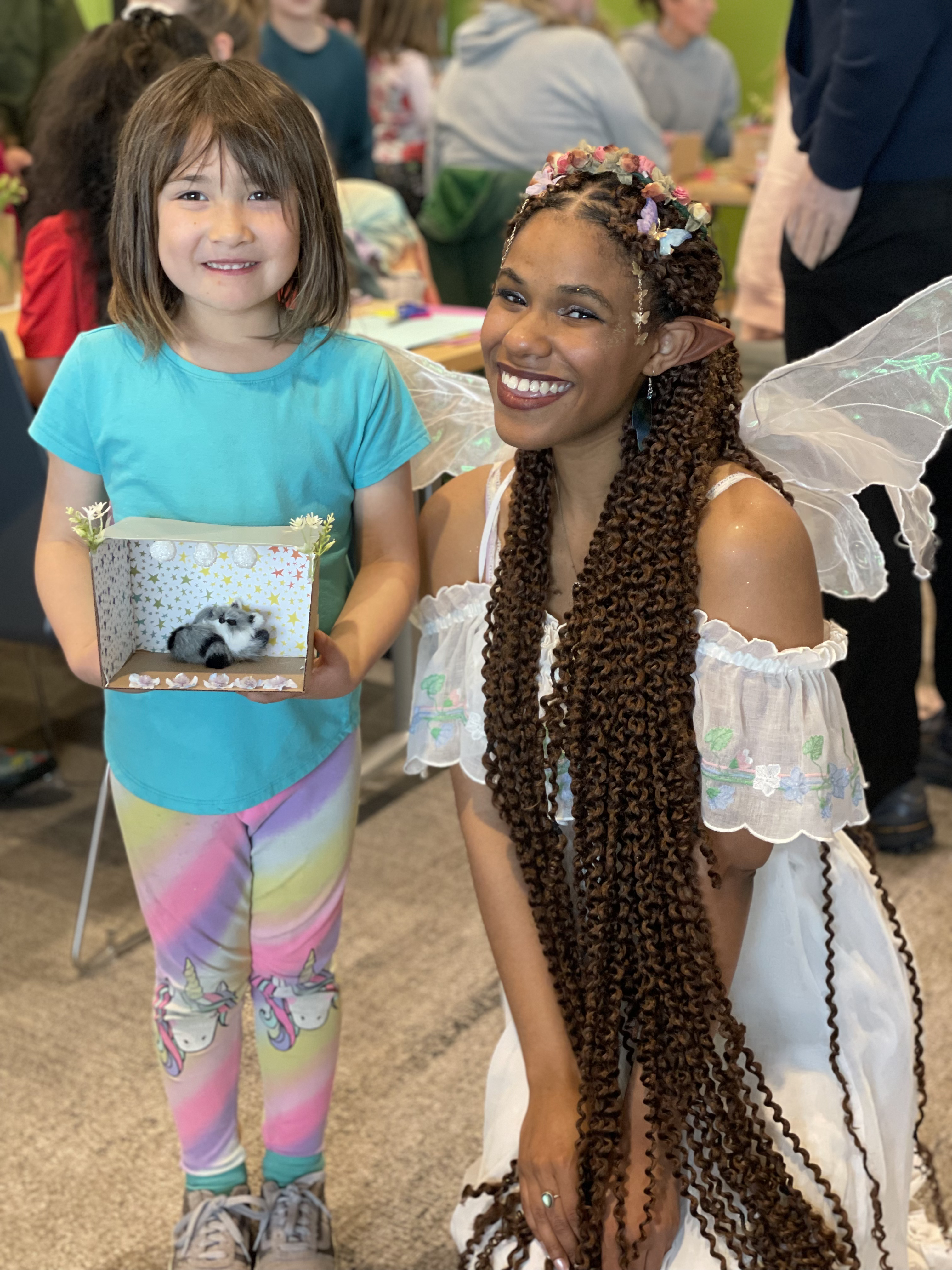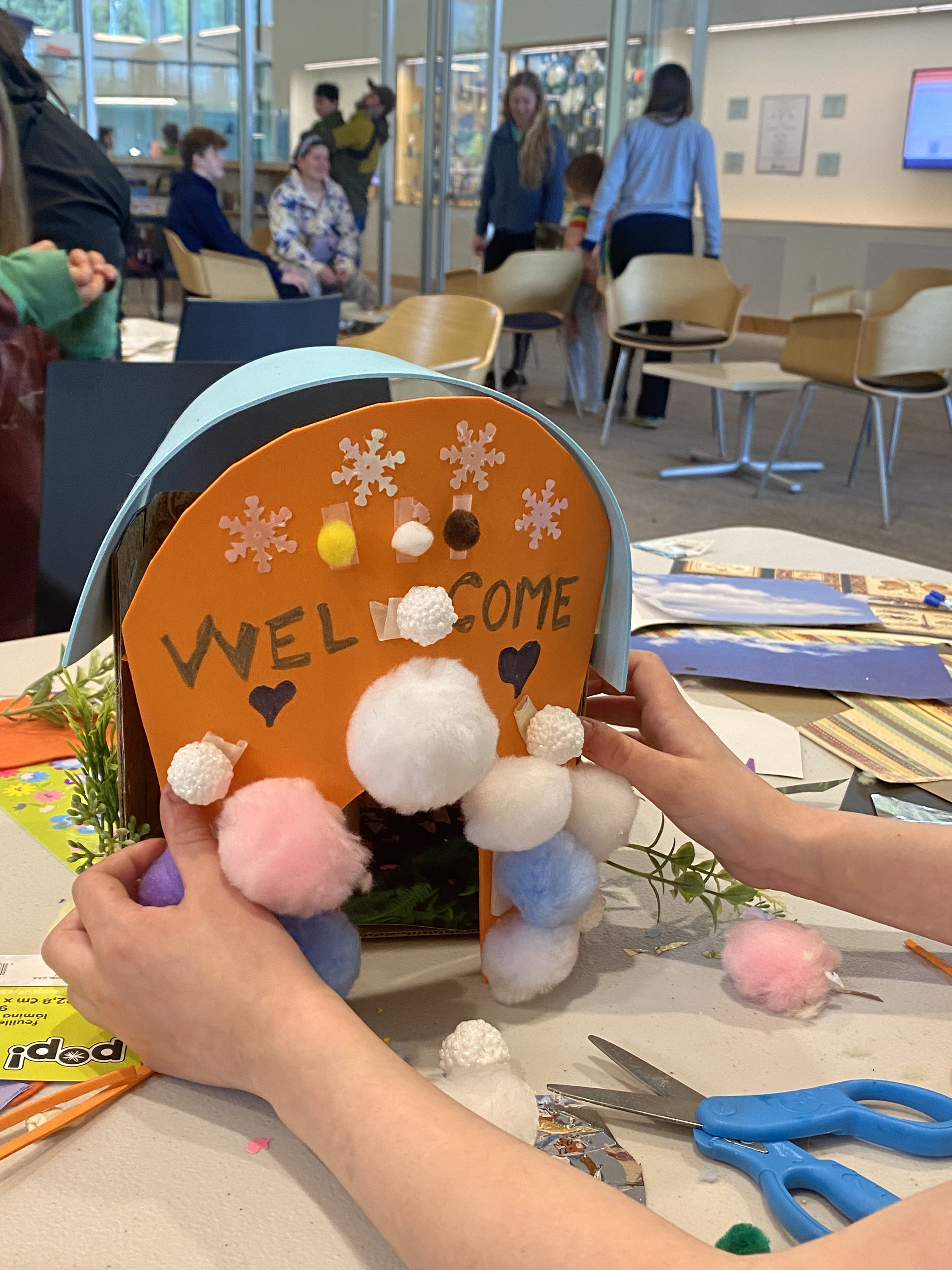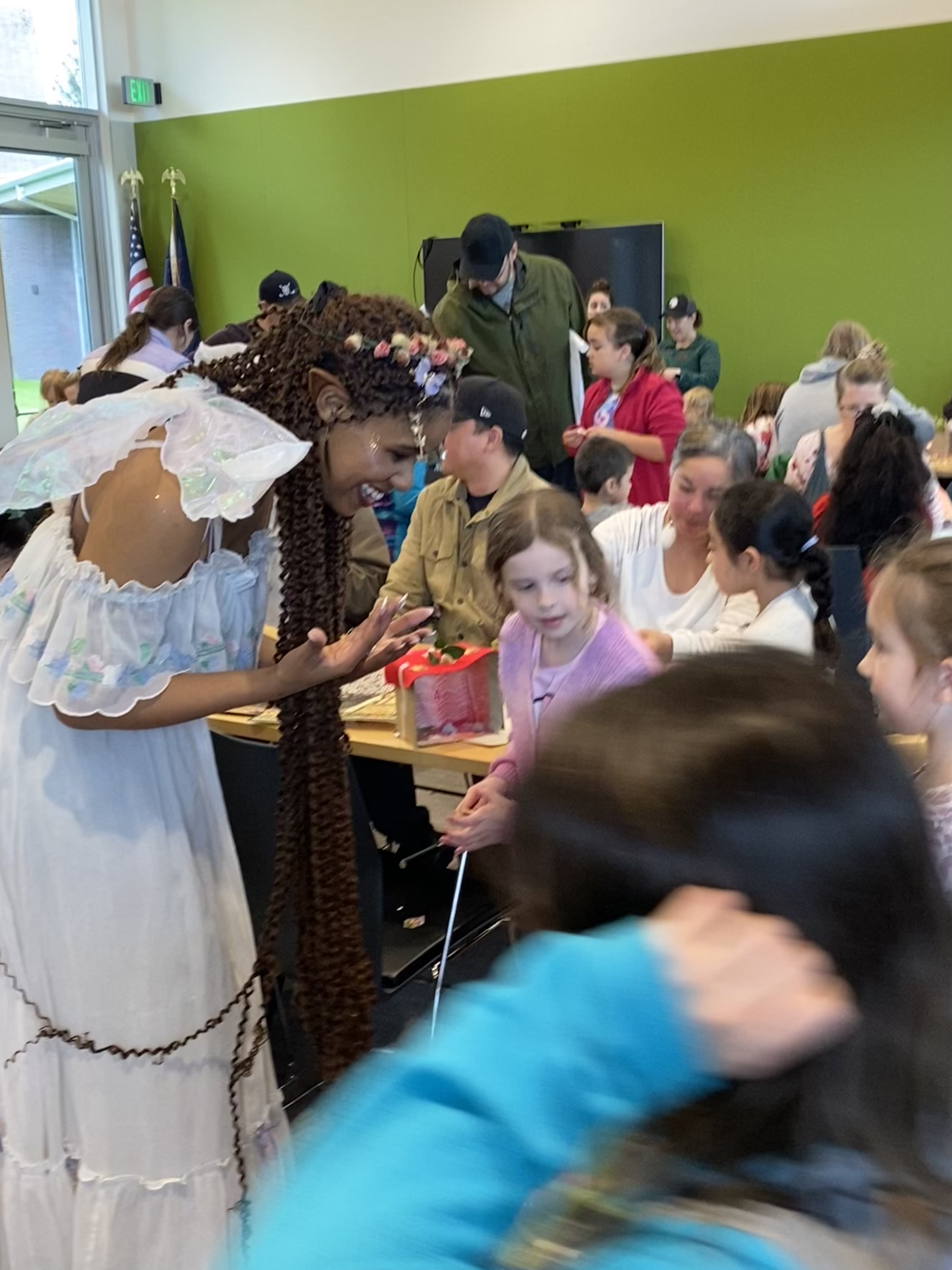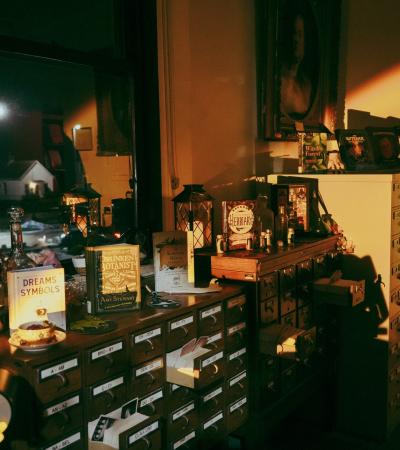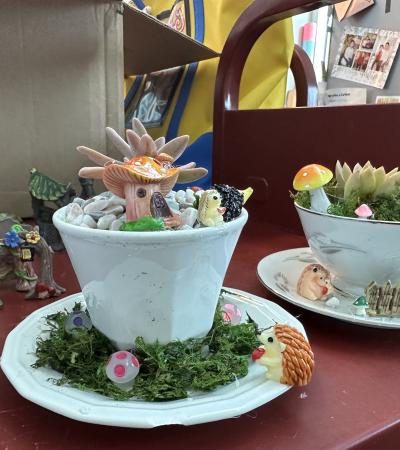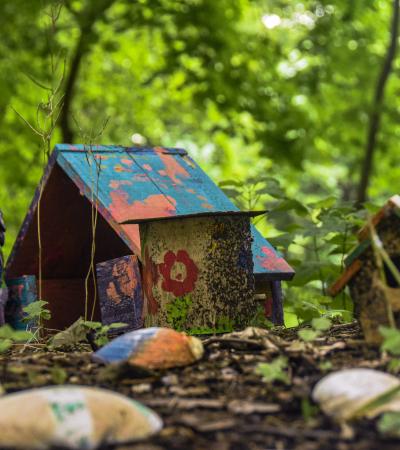When we were kids, my sister and I would spend rainy Juneau summer days (which were often) creating cardboard houses for our dolls. As we got older and I moved away for college, many of the dollhouses were recycled, with the exception of one recycled ramen box that we transformed into a fairy library. The fairy library spent years as a decorative dust collector on my sister’s bookshelf until I borrowed it to bring to my interview as part of my program proposal.
During my interview, I overexcitedly explained how we could host a Fairy House Workshop as part of the annual Summer Reading Program, with the fairy library as a sample house. After I was hired, I was given permission to make this program idea a reality and host a Fairy House Workshop for July 2023.
It was a nightmare.
The first (and worst) workshop
In the early planning stages, I had researched Fairy House Workshops that were held at other libraries across the country (including one featured here on Programming Librarian!) and felt assured that this program could be done in Juneau.
Some libraries required participants to register prior to the program, but I decided to opt out of requiring registration to keep the program as accessible as possible.
The first program I ever implemented, our Juneteenth Jubilee in June 2023, had an attendance of 27 people, so I anticipated this workshop attendance would be about the same. For the next few weeks, I pre-constructed 25 recycled cardboard boxes similar to how my sister and I would make our dollhouses, so that kids could choose their house and focus on decorating it to their liking.
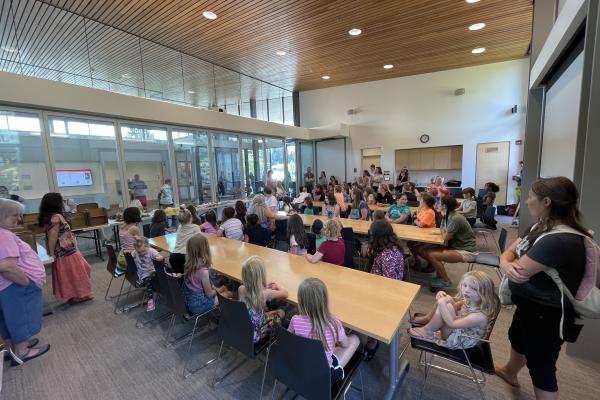
On the day of the event, I stocked eight tables with craft supplies, decorations, plastic flowers, and 25 fairy houses ready to be decorated. About 15 minutes before the event, I was overjoyed to see a small crowd of families beginning to cluster in the lobby outside of the meeting room. But my excitement devolved into anxiousness when I opened the doors, and the people just kept coming—significantly more than 27.
Creative chaos
Five minutes past the program’s advertised start time, the large meeting room was over its 60-person capacity. There wasn’t enough space, there weren’t enough craft supplies, and there weren’t enough houses for the people in the room, let alone the people still filing in from outside. I was alone, with no other staff or volunteers, and I was panicking. While I was frantically pulling out the last of the chairs from the storage room, one mom grabbed me by the elbow and asked if I was alright. Once she understood what was happening, she raised her voice and commanded the attention of everyone in the overcrowded meeting room: “HEY! LISTEN! There are way more people here than expected. There are not enough supplies for everyone here…”
At that moment, the mom’s voice drowned out, and I was internally reeling over the premature failure of this program. How did this become a disaster before it even began? Why didn’t I require registration? If I had, I could have anticipated the number of attendees and ensured that everyone would have a fairy house and supplies, but instead, we’re…
The mom continued, “...We’re going to group up! My kiddos,” she pointed at her children, “you all came here together, so you’ll all get one house. I know a lot of you came here with your friends or your siblings or whoever. We’re going to team up and share the houses they have.”
From then on, the room became electric with creative, chaotic energy. Fairy homes became fairy condominiums and apartments. Some parents brought back empty boxes from their cars to supplement the cardboard shortage. The kids (who had absolutely picked up on the event-gone-upside-down energy) were ecstatic to share the stories of their fairies’ unique shared living situations: “They’re sisters!” “They’re friends!” “They’re a rock band that lives together!”
In total, 133 people attended the 2023 Fairy House Workshop. Though it felt like a complete disaster at the start, it became one of the most rewarding moments of my library career; this was entirely thanks to every person in the library that day who shared in the collective goal of making the most of this program.
A whimsical success
After an overwhelming (and surprising) amount of positive responses after the program, another workshop was planned for the following summer, but with the primary goal to make changes necessary to ensure that the next workshop would be a functional success. In the two years and dozens of changes since, this program has reached its final and most successful stage: the Fairy House Workshop Weekend.
The Fairy House Workshop Weekend is now an annual program that spans across two days: one day is the Kids & Families Workshop, and one day is the Adult Workshop (an addition that was specifically requested by some of our adult patrons). Our most recent workshop in July 2025 had 139 people attend the Kids & Family Workshop, and 67 adults attend the Adult Workshop, for a total of 206 attendees throughout the weekend!


